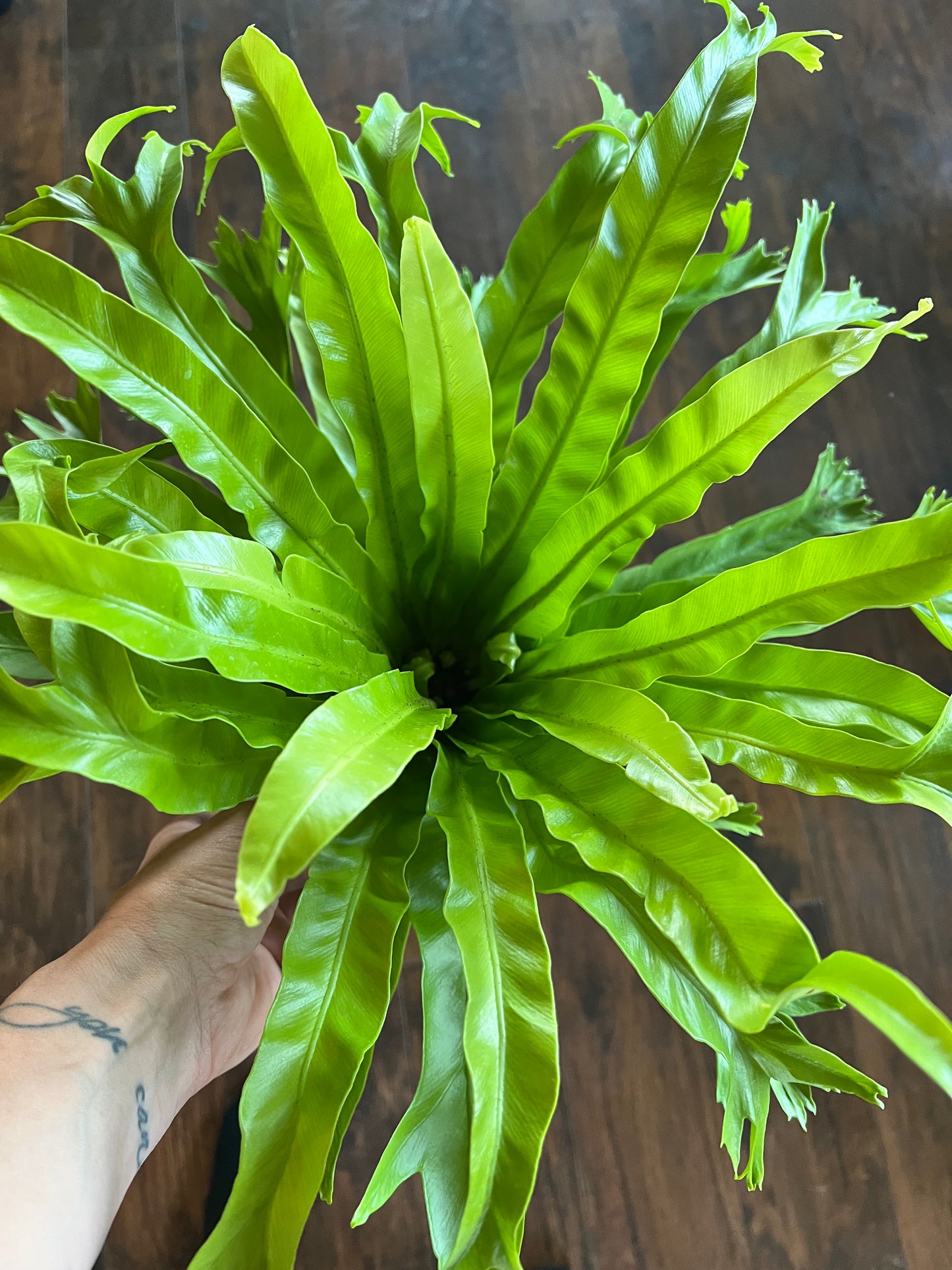The Rooted Plant Shop
Bird’s Nest Fern 6”
Bird’s Nest Fern 6”
Couldn't load pickup availability
Bird's nest ferns (Asplenium nidus) are epiphytic, meaning they grow on the surface of other plants in their rainforest habitat. These ferns have long, erect bright green fronds that grow from a central rosette. Unlike some other ferns, which grow feathery leaflets, bird's nest ferns have smooth, lance-shaped fronds that sometimes develop gentle ripples when grown with sufficient light.
They prefer medium to bright indirect light, high humidity, and moist, well-drained soil. Because they thrive in warm, humid environments, these ferns make an excellent bathroom plants. (Bathrooms with windows) Bird's nest ferns have a slow growth rate and grow more slowly and remain smaller when kept indoors versus outdoors.
Bird's Nest Fern Care
- Place in a location with medium to bright indirect light or partial shade.
- Maintain a temperature between 60°F and 80°F and ideally high humidity.
- Plant in a peat-based potting mix with good drainage.
- Water so the soil is evenly moist but not soggy.
- Feed with a balanced houseplant fertilizer once per month during the growing season.
Bird’s nest ferns grow well in filtered sunlight to partial shade Don’t expose them to direct sunlight other than the very early morning sun. Harsh direct sunlight can burn the leaves. Indoors, an east- or north-facing window is ideal.
Soil
These plants like soil that’s loose and rich in organic matter with excellent drainage. A peat-based potting mix is good for container plants.
Water
These ferns prefer consistent soil moisture, but they don’t do well sitting in soggy soil. Water whenever the top inch of soil is dry. Avoid watering directly into the center of the plant, as this can encourage mold growth and rot in the dense nest. Aim water at the soil to avoid wetting the fronds.
Temperature and Humidity
Bird’s nest ferns thrive in temperatures between 60 and 80 degrees Fahrenheit. This plant can tolerate temperatures down to 50 degrees, but anything colder can harm the plant, especially with prolonged exposure. Indoors, protect your plant from air conditioning or heating vent drafts.
Share

Let customers speak for us
from 373 reviewsThe way they wrap the plant in the insulation, it creates a tube of warmth for the plant with the heat pack at the bottom.

This is so fun! I received choices on how I would get my plants! 🌱 The one that was sent was perfect along with a cactus and another cute succulent! She has helped me with so many plant issues! Thanks Mel for being an amazing small business!

Everything came beautifully packaged and in such good shape. Thank you!!

I love the way Rooted plant shop wrapped up the plants n tight so they can get here in one piece. Mel also likes to educate us on plants. She makes it really easy helps us of how to take care of the plants. Thank u very much Mel for everything u do for us bottom from my heart. I appreciate u

Shipping was so fast. The plant was so safe and secure when it arrived. Mel is so great, and so knowledge. Never had a disappointing purchase.

The rooted plant shop is impeccable. I am and will continue to be a returning customer. Seller/owner very professional and very knowledgeable in her field of plants. Packaging is packed with great care.. fast shipping as well.. and the plants are as described, healthy and gorgeous!

I bought a Dieffenbachia from Mel she’s beautiful. The third leaf is just now coming out. I can’t be more happier with her.
The Spanish moss from The Rooted Plant Shop are ABSOLUTELY STUNNING!!! Incredibly healthy and full!! So happy and can’t wait for more to be stocked!!










